Face-Off: Red Dead Redemption
And the West.
Much has been said about the foliage in the game, the assortment of brush that adds a bit more life to the fairly barren landscape within Rockstar's recreation of the Wild West.
It's fairly obvious from the screenshots shown to date that there has been some significant paring back of detail on the PS3 version of the game, so what's going on? Well, the foliage is generated from transparent alpha textures and these are more expensive for the host hardware to draw.
Cutting back on them saves on performance in terms of fill-rate and bandwidth. It's also interesting to note that the alpha-to-coverage transparency type is used on both systems, but looks considerably worse on PS3 owing to the reduced resolution.
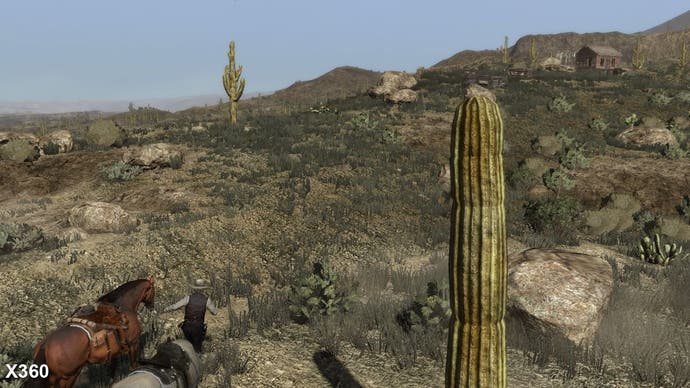


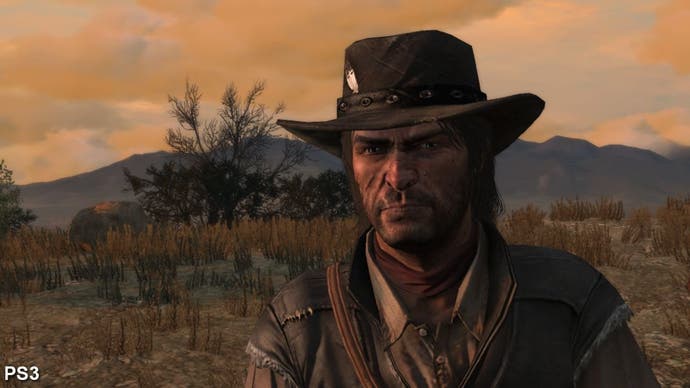
This is incidental detail - albeit one of the more prominent elements - so unless you have both games operating side by side you are not really going to notice it. However, it is a clear indication that Rockstar had to pick and choose where to make compromises in order to retain performance, and even then this compromise still fails to match what is being provided by the Xbox 360 version of the game in terms of frame-rate in the more action-orientated sequences.
While texture detail and filtering appears to be like-for-like (as you would hope for in a game built upon a model of streaming in detail from the optical disc), there are some other cutbacks too. In this shot from the intro, you can see that the water effect is somewhat reduced on PS3, and that occasionally entire shadows appear to be absent - perhaps the result of a more aggressive level-of-detail management system.
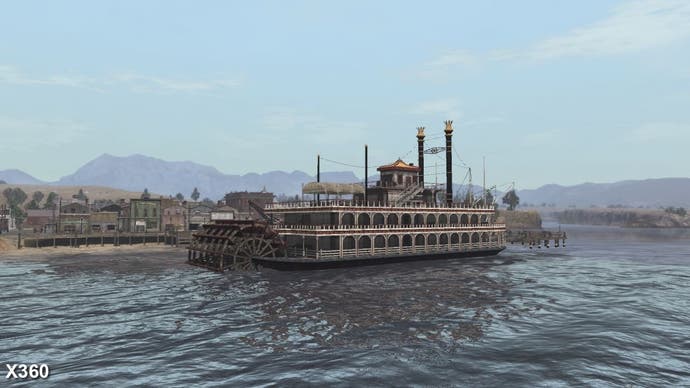


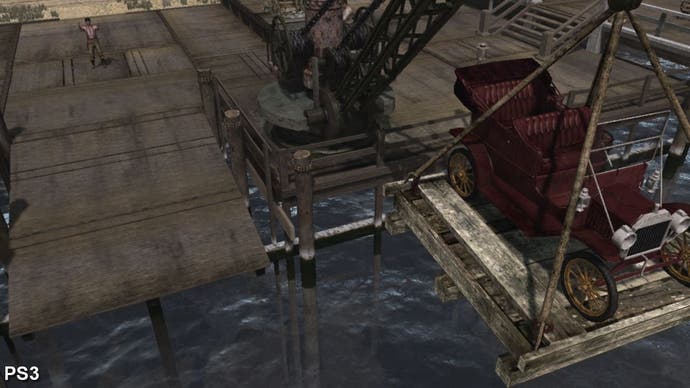
We also see that the view distance on PS3 has been pulled back (or rather forward), although it's more accurate to say that view detail has been reduced. Xbox 360 gives you more detail further away, not just in terms of raw resolution but with actual object placement too. There are some stunning vista shots in Red Dead Redemption that demonstrate this quite nicely.
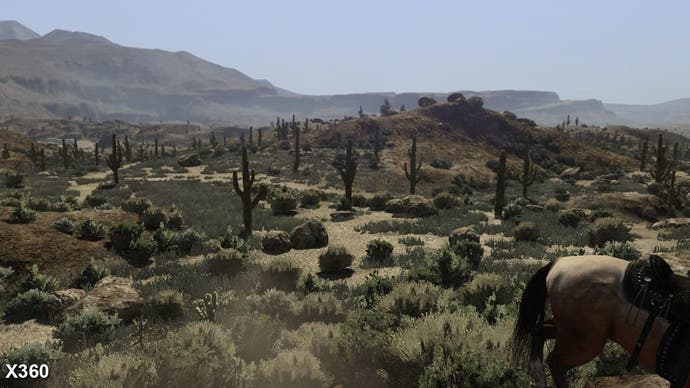
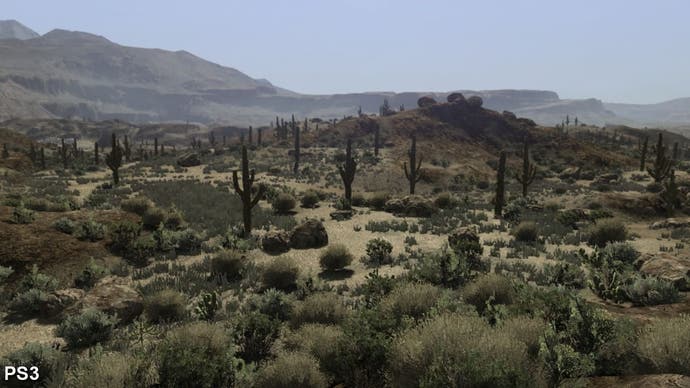
At the same time, there are one or two oddities in the Xbox 360 version of the game that, while extremely minor and barely noticeable, nevertheless look a bit strange. In the comparison shots below, you can see that the PS3 version of the game is casting light into the scene from doors and windows, but that the effect is missing on Xbox 360. In both cases, time of day should be synchronised.
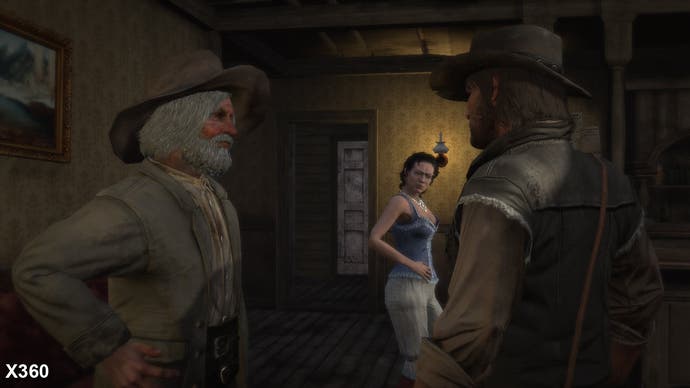

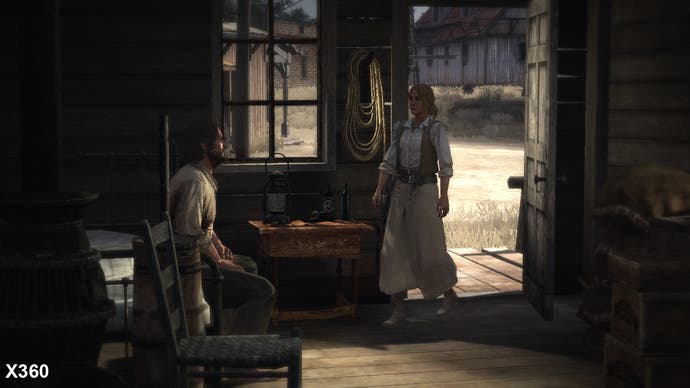
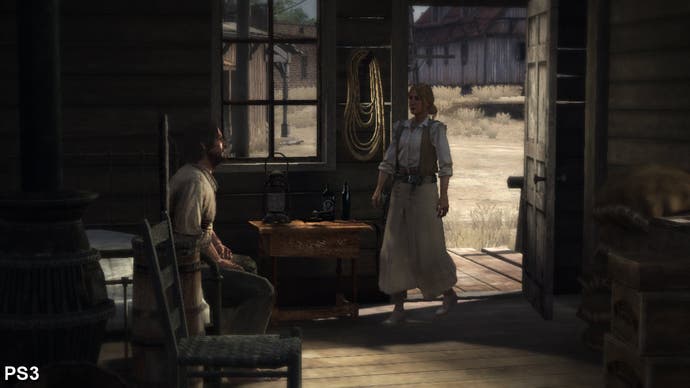
Equally odd is that even in shots where we can assume that the time of day is precisely the same (i.e. during the intro sequence or just after it), there are some pretty major differences in terms of the overall effect of the lighting in certain places. It may well be the case that overhead cloud formations are different, or that the entire timebase for the intro is running at slightly different speeds, which may explain it, but otherwise it does seem to result in some changes that we can't quite get our heads around.
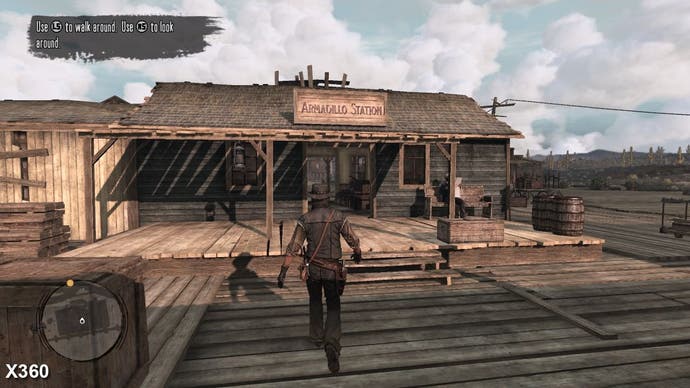

While there are many comparisons to be had with Grand Theft Auto IV which indicate that the technology shares the same underpinnings, it's clear to see that the switch from the intensely detailed urban metropolis of Liberty City to the frontier of Red Dead Redemption has necessitated a lot of additional work from Rockstar San Diego.
It is perhaps not surprising. A cityscape naturally brings about a lot of occluding buildings, masking out the environments beyond, and reducing engine load. Red Dead Redemption is all about making up for the reduced levels of detail in the foreground by presenting a wilderness setting that seems to stretch almost limitlessly into the distance.
It might be cool to compare and contrast the similarities and differences between GTA IV and Red Dead Redemption, but the bottom line is that so much has changed from one game to the next that there are no firm conclusions we can draw about whether Rockstar's RAGE tech has actually improved in terms of raw performance over the last couple of years.
However, what is clear is that the differential between PS3 and Xbox 360 remains in roughly the same ballpark from one game to the next.
So, we're just left with the matter of the final recommendation. We've demonstrated conclusively that the Xbox 360 version of Red Dead Redemption possesses higher resolution, improved levels of detail, noticeably superior performance in-game and fewer jaggies owing to a more consistently applied anti-aliasing solution that doesn't blur the image. Shadows are generally sharper, and of better quality (particularly on the characters' self-shadows).
Just about the only area where PS3 commands an advantage is in terms of loading: the 515MB mandatory install shaves off a few seconds, but as the only in-game loading occurs during fast-travel between locations (using the campsite), it's hardly worth mentioning. Certainly the install doesn't grant any kind of tangible performance boost in terms of less LOD-popping or anything like that.
However, none of this is to say that Red Dead Redemption is not a good game in its own right on PlayStation 3. Play on PS3 without having seen the 360 version and it's difficult to imagine that the fun factor of the game has been massively impacted. And if Rockstar had decided to deliberately dial back 360 to make the game look and feel identical to the PS3 version, it's hard to imagine that the enviable scores it has attracted would be any different.
In short, Rockstar is to be commended on what is an absolutely fantastic game on both platforms, but the technical analysis is pretty conclusive: if you've got the choice of buying the game for either console, Xbox 360 is the version of Red Dead you should buy.
Check out our Red Dead Redemption review elsewhere on Eurogamer.




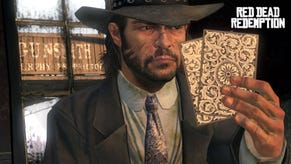
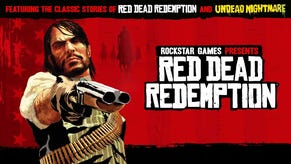
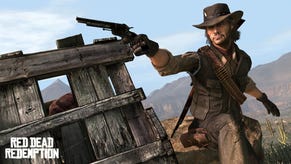
.jpg?width=291&height=164&fit=crop&quality=80&format=jpg&auto=webp)






